

Acetobacter aceti is a Gram negative bacterium that moves using its peritrichous flagella. It is a benign microorganism which is present everywhere in the environment, existing in alcoholic ecological niches which include flowers, fruits, honey bees, as well as in water and soil.
Common Species are as follows:-
Acetobacter aceti;
Acetobacter calcoaceticus;
Acetobacter cerevisiae;
Acetobacter cibinongensis;
Acetobacter diazotrophicus;
Acetobacter estunensis;
Acetobacter indonesiensis;
Acetobacter lovaniensis;
Acetobacter malorum;
Acetobacter orientalis;
Acetobacter orleanensis;
Acetobacter pasteurianus;
Acetobacter peroxydans;
Acetobacter polyoxogenes;
Acetobacter pomorum;
Acetobacter subgen.
Acetobacter syzygii;
Acetobacter tropicalis;
Acetobacter sp.
Acetobactor xylinum
The bacteria is used in production of vinegar and in production of acetic acid.

Achromobacter is a genus of bacteria, included in the family Alcaligenaceae in the order Burkholderiales. The cells are Gram-negative straight rods and are motile by using one to 20 peritrichous flagella. They are strictly aerobic and are found in water (fresh and marine) and soils. They have also been identified as a contaminant in laboratory cell cultures
A. arsenitoxydans
A. cholinophagum
A. clevelandea
A. cycloclastes
A. denitrificans
A. insolitus
A. lyticus
A. marplatensis
A. obae
A. piechaudii
A. ruhlandii
A. spanius
Bioconversion
of hazardous DEHP plasticizer in plastics into a drug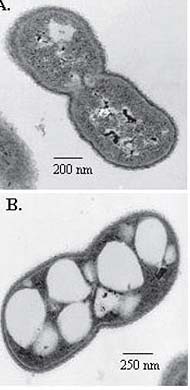
Acinetobacter (a-sin-NEET-to-bak-ter) is a genus of Gram-negative bacteria belonging to the wider class of Gamma proteobacteria.
Acinetobacter species are not motile and oxidase-negative, and occur in pairs under magnification.
They are important soil organisms, where they contribute to the mineralization of, aromatic compounds.
Acinetobacter species are a key source of infection in debilitated patients in the hospital, in particular the species Acinetobacter baumannii.
Species of the genus Acinetobacter are strictly aerobic, non fermentative, Gram-negative bacilli. They show preponderantly acoccobacillary morphology on non selective agar. Rods predominate in fluid media, especially during early growth.
Common Species are as follows:-
Acinetobacter baumannii
Acinetobacter beijerinckii
Acinetobacter bereziniae
Acinetobacter boissieri
Acinetobacter bouvetii
Acinetobacter brisouii
Acinetobacter calcoaceticus
Acinetobacter gerneri
Acinetobacter guillouiae
Acinetobacter gyllenbergii
Acinetobacter haemolyticus
Acinetobacter indicus
Acinetobacter junii
Acinetobacter lwoffii
Acinetobacter nectaris
Acinetobacter nosocomialis
Acinetobacter parvus
Acinetobacter pittii
Acinetobacter radioresistens
Acinetobacter rudis
Acinetobacter schindleri
Acinetobacter soli
Acinetobacter tandoii
Acinetobacter tjernbergiae
Acinetobacter towneri
Acinetobacter ursingii
Acinetobacter venetianus
This is an important bacteria used for:
Degradation of petroleum, carbon compounds
Oxidation/utilization of hydrocarbons,
Production of emulsifier EF-RAG, Exocellular esterase
Oxidation/utilization of phenols and phenylacetate
Production of Urease
They are important soil organisms, where they contribute to the mineralization of, for example, aromatic compounds. Acinetobacter species are a key source of infection in debilitated patients in the hospital, in particular the species Acinetobacter baumannii.
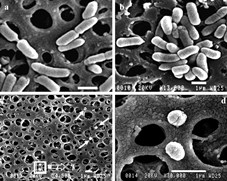
Aeromonas hydrophila is a species of gram-negative bacteria. These organisms are oxidase-positive and facultatively anaerobic. Aeromonas hydrophila is a member of the family Aeromonadaceae, and is only one of six species Aeromonas species that are known to be pathogenic in humans. It is also pathogenic in fish.
Common Species are as follows:-
Aeromonas hydrophila subsp. decolorationis
Aeromonas hydrophila subsp. dhakensis
Aeromonas hydrophila subsp. hydrophila
A. aquariorum
A. allosaccharophila
A. australiensis
A. bestiarum
A. bivalvium
A. caviae
A. diversa
A. encheleia
A. enteropelogenes
A. eucrenophila
A. fluvialis
A. hydrophila
A. jandaei
A. media
A. molluscorum
A. piscicola
A. popoffii
A. punctata
A. rivuli
A. salmonicida
A. sanarellii
A. schubertii
A. sharmana
A. simiae
A. taiwanensis
A. tecta
A. veronii
The bacteria is used in
Production of 2,3- butanediol
Aeromonas hydrophila is resistant to many common antibiotics such as penicillin and ampicillin. It is also resistant to refridgeration and able to grow at low temperatures. It can also thrive at warmer tempreatures, growing at 37 degrees celsius as well as it can at 25 degrees celsius. Aeromonas hydrophila are resistant to chlorine.
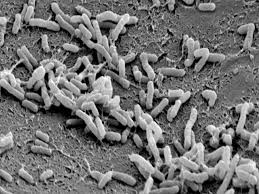
Agrobacterium is a genus of Gram-negative bacteria established by H. J. Conn that uses horizontal gene transfer to cause tumors in plants. Agrobacterium tumefaciens is the most commonly studied species in this genus. Agrobacterium is well known for its ability to transfer DNA between itself and plants, and for this reason it has become an important tool for genetic engineering.
The Agrobacterium genus is quite heterogeneous. Recent taxonomic studies have reclassified all of the Agrobacterium species into new genera, such as Ahrensia, Pseudorhodobacter, Ruegeria, and Stappia, but most species have been controversially reclassified as Rhizobium species.
Common Species are as follows:-
Agrobacterium albertimagni
Agrobacterium larrymoorei
Agrobacterium radiobacter
Agrobacterium rhizogenes
Agrobacterium rubi
Agrobacterium tumefaciens
Agrobacterium vitis
The bacteria is used in Production of Hydantoinase, Polysacchardie
The ability of Agrobacterium to transfer genes to plants and fungi is used in biotechnology, in particular, genetic engineering for plant improvement. A modified Ti or Ri plasmid can be used. Agrobacterium into an efficient delivery system for gene engineering in plants. A team of researchers led by Dr Mary-Dell Chilton were the first to demonstrate that the virulence genes could be removed without adversely affecting the ability of Agrobacterium to insert its own DNA into the plant genome.
The genes to be introduced into the plant are cloned into a plant transformation vector that contains the T-DNA region of the disarmed plasmid, together with a selectable marker (such as antibiotic resistance) to enable selection for plants that have been successfully transformed. Plants are grown on media containing antibiotic following transformation, and those that do not have the T-DNA integrated into their genome will die. An alternative method is agroinfiltration.


Alcaligenes is a genus of Gram-negative, aerobic, rod-shaped bacteria. The species are motile with one or more peritrichous flagella and rarely nonmotile. It is a genus of non fermenting bacteria (in the family Alcaligenaceae). Additionally, some strains of Alcaligenes are capable of anaerobic respiration, but they must be in the presence of nitrate or nitrite; otherwise, their metabolism is respiratory and never fermentative; The genus does not use carbohydrates. Strains of Alcaligenes (such as A. faecalis) are found mostly in the intestinal tracts of vertebrates, decaying materials, dairy products, water, and soil; they can be isolated from human respiratory and gastrointestinal tracts and wounds in hospitalized patients with compromised immune systems. They are occasionally the cause of opportunistic infections, including nosocomial septicemia.
Common Species are as follows:-
A. aestus
A. aquatilis
A. cupidus
A. defragrans
A. denitrificans
A. eutrophus
A. faecalis
A. latus
A. pacificus
A. piechaudii
A. ruhlandii
A. venustus
A. xylosoxidans
The bacteria is used in assay of Cephalosporin,
Production of B-glucosidase, Polysacchardie, single cell protein
Alcaligenes species have been used for the industrial production of nonstandard amino acids; A. eutrophus also produces the biopolymer polyhydroxybutyrate.
Alcaligenes is of significant concern to the medical industry, and mapping the genome would provide researchers with consistent identification of this bacteria. However, no major organizations have attempted to sequence it as of yet.
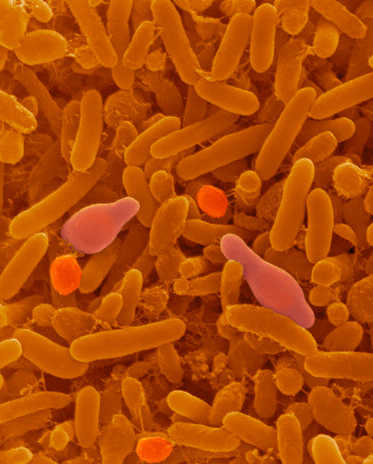
Alicyclobacillus is a genus of Gram positive, rod-shaped, sporeforming, bacteria. The bacteria are able to grow in acidic conditions, while the spores are able to survive typical pasteurization procedures.
Common Species are as follows:-
Alicyclobacillus acidocaldarius
A. acidiphilus
A. acidocaldarius
A. acidocaldarius subsp. acidocaldarius
A. acidocaldarius subsp. rittmannii
A. acidoterrestris
A. aeris
A. contaminans
A. cycloheptanicus
A. disulfidooxidans
A. fastidiosus
A. ferrooxydans
A. herbarius
A. hesperidum
A. kakegawensis
A. macrosporangiidus
A. pohliae
A. pomorum
A. sacchari
A. sendaiensis
A. shizuokensis
A. tolerans
The bacteria is used in production of amylase, Xylanase
Alicyclobacilli were detected in the raw material used to make the beverage.
Alicyclobacillus species do not grow well on the non-selective solid media typically used to determine total viable counts in food and beverages.
Use of oxidizing agents for fruit washing
The first source of Alicyclobacillus contamination in the fruit juice processing facilities is found at
the surface of the fruit contaminated by soil during harvesting, transportation or storage. Thus,
several studies have focused on the treatment of fruit to reduce contamination before it enters the
processing plant.
Use of natural components for juice preservation
Some studies reported the use of natural components for juice preservation.
reported that Alicyclobacillus species were not able to grow in red grape juice due to the presence
of polyphenols such as trans-resveratrol or ferulic acid. Brodbeck showed the influence of
polyphenols content on growth of A. acidoterrestris in iced tea. The phenol content in iced tea
made from infusions of green and black tea had inhibitory influence on growth of
A. acidoterretris
and iced tea made from soluble extracts with lower levels of phenols did not possess antimicrobial
properties
Use of preservatives for juice preservation
Natural bacteriocins such as nisin, enterocin AS-48 or warnericin produced or extracted
respectively from Lactococcus lactis supsp. lactis, Enterococcus faecalis A-48-32 and
Staphylococcus warneri have proved to have an ability to inhibit growth of spores and vegetative
cells of A. acidoterrestris.
Use of non conventional methods for juice stabilization and storage
The optimization of thermal processing has been considered for a long time as the only way to
control A. acidoterrestris in acidic drinks and inhibit spore germination. However new techniques
have been studied in order to reduce the loss of sensorial and nutritional quality due to a thermal treatment.
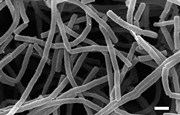
The genus Amycolatopsis is a member of the phylogenetic group no cardioform actinomycetes. Most of the members of the genus
Amycolatopsis are known to produce antibiotics.
This genus originally attracted attention for its antibiotic producing capabilities.
Common Species are as follows:-
Amycolatopsis alba
Amycolatopsis albidoflavus
Amycolatopsis amamiensis
Amycolatopsis australiensis
Amycolatopsis azurea
Amycolatopsis balhimycina
Amycolatopsis benzoatilytica
Amycolatopsis coloradensis
Amycolatopsis decaplanina
Amycolatopsis echigonensis
Amycolatopsis eurthyerma
Amycolatopsis fastidiosa
Amycolatopsis flava
Amycolatopsis halotolerans
Amycolatopsis iriomotensis
Amycolatopsis japonica
Amycolatopsis jejuensis
Amycolatopsis jiangsuensis
Amycolatopsis kentuckyensis
Amycolatopsis keratiniphila
Amycolatopsis lactamdurans
Amycolatopsis lexingtonensis
Amycolatopsis lurida
Amycolatopsis marina
Amycolatopsis mediterranei
Amycolatopsis methanolica
Amycolatopsis minnesotensis
Amycolatopsis nigrescens
Amycolatopsis niigatensis
Amycolatopsis orientalis
Amycolatopsis palatopharyngis
Amycolatopsis plumensis
Amycolatopsis pretoriensis
Amycolatopsis regifaucium
Amycolatopsis rifamycinica
Amycolatopsis rubida
Amycolatopsis saalfeldensis
Amycolatopsis sacchari
Amycolatopsis sulphurea
Amycolatopsis taiwanensis
Amycolatopsis thermoflava
Amycolatopsis tolypomycina
Amycolatopsis tucumanensis
Amycolatopsis ultiminotia
Amycolatopsis umgeniensis
Amycolatopsis umgeniensis
Amycolatopsis vancoresmycina
The bacteria is used in production of rifamycin B, SV
Amycolatopsis mediterranei is used for industry-scale production of rifamycin, which plays a vital role in antimyco bacterial therapy.
The genus Amycolatopsis is a member of the phylogenetic group nocardioform actinomycetes. Most of the members of the genus
Amycolatopsis are known to produce antibiotics.
Production of bioemulsifiers by Amycolatopsis tucumanensis DSM 45259 and their potential application in remediation technologies for soils contaminated with hexavalent chromium.
This genus originally attracted attention for its antibiotic producing capabilities.
The actinomycete Amycolatopsis sp. ATCC 39116 is capable of synthesizing large amounts of vanillin from the natural substrate ferulic acid. This bacterium therefore represents the most promising platform for the biotechnical production of natural vanillin.
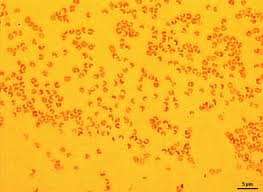
A Gram-negative, pleomorphic, rod-shaped, non-spore-forming bacterium
Ancylobacter sp.
The bacteria is used in production of L-Glutamic acid, Vitamin B12
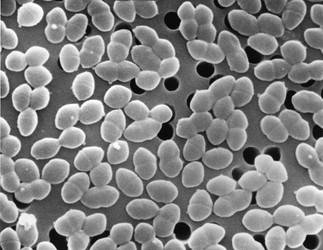
Common Species are as follows:-
Aneurinibacillus aneuriniolyticus
The bacteria is used in Degradation of petroleum, carbon compounds
Oxidation/utilization of hydrocarbons,
Production of emulsifier EF-RAG, Exocellular esterase


Arthrobacter are your basic soil bacteria, but have been found to perform several important functions as we continue to poison the earth with various nasty chemicals. Recently, it has been discovered that several species of Arthrobacter can reduce hexavalent chromium, which can cause severe irritaions to humans, and they are also known to degrade agricultural pesticides.
Arthrobacteria are coryneform bacteria. They are characterized by pleomorphism (variable shape) and Gram variability (staining positive or negative) although genetically they branch from the Gram-positive phylum Actinobacteria. They have a complex life cycle marked by two distinct stages. When the cultures are young, cells are slender rods that may stain Gram-negative. Jointed rods can be observed after about 1-2 days. By about 30 hours the cells have become very short, gram-positive rods and coccoids. Arthrobacteria are nonsporulating and are members of the actinomycete branch of the gram-positive bacteria. Many arthrobacteria exhibit a weak motility that is often overlooked.
Seventeen Arthrobacter genomes are available via the National Center for Biotechnology Information (NCBI).
Arthrobacter arilaitensis
Arthrobacter phenanthrenivorans
Arthrobacter chlorophenolicus
Arthrobacter aurescens
Arthrobacter nitroguajacolicus
Arthrobacter globiformis
Arthrobacter globiformis,
Arthrobacter polychromogenes
Arthrobacter simplex
Arthrobacter sp.
Arthrobacter ureafaciens
Arthrobacter lutes
Arthrobacter nicotianae
The bacteria is used in Production of pigments
Because of their metabolic diversity, Arthrobacter species have been taken advantage of for their ability to biodegrade various types of pollutants in our environment. Species of the genus, like Arthrobacter sp. are quite resistant to certain heavy metals that are toxic, which is useful. Arthrobacter aurescens strain TC1 can metabolize more than 23 kids of s-triazine compounds, an important fact to consider since these compounds are found in pesticides, resins, dyes, and explosives. Arthrobacter crystallopoietes can reduce hexavalent chromium levels in soil, which may mean that there are potential future applications for it in bioremediation as well.
Degradation of Levulinic acid
Production of Glucose isomerase, Benzoic acid, Salicyclic acid
Degradation of creatinin
Production of restriction enzymes
Degradation of Nicotine
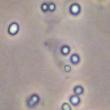

Azotobacter also synthesizes some biologically active substances, including some phytohormones such as auxins, thereby stimulating plant growth. They also facilitate the mobility of heavy metals in the soil, thus enhancing bioremediation of soil from heavy metals, such as cadmium, mercury and lead. Some kinds of Azotobacter can also biodegrade chlorine-containing aromatic compounds, such as 2,4,6-trichlorophenol.
Common Species are as follows:-
Azotobacter agilis
Azotobacter armeniacus
Azotobacter sp. AR
Azotobacter beijerinckii
Azotobacter chroococcum
Azotobacter sp. DCU26
Azotobacter sp. FA8
Azotobacter nigricans
Azotobacter paspali
Azotobacter salinestris
Azotobacter tropicalis
Azotobacter vinelandii
The bacteria is used in Production of L-Carnitine
Production of Poly-B-hydroxybutyrate
Owing to their ability to fix molecular nitrogen and therefore increase the soil fertility and stimulate plant growth, Azotobacter species are widely used in agriculture, particularly in nitrogen biofertilizers such as azotobacterin. They are also used in production of alginic acid, which is applied in medicine as an antacid, in the food industry as an additive to ice cream, puddings, and creams, and in the biosorption of metals.Nitrogen fixation plays an important role in the nitrogen cycle. Azotobacter also synthesizes some biologically active substances, including some phytohormones such as auxins, thereby stimulating plant growth. They also facilitate the mobility of heavy metals in the soil, thus enhancing bioremediation of soil from heavy metals, such as cadmium, mercury and lead. Some kinds of Azotobacter can also biodegrade chlorine-containing aromatic compounds, such as 2,4,6-trichlorophenol. The latter was previously used as an insecticide, fungicide, and herbicide, but later was found to have mutagenic and carcinogenic effects.


Bacillus is a genus of Gram-positive, rod-shaped (bacillus), bacteria and a member of the phylum Firmicutes. Bacillus species can be obligate aerobes (oxygen reliant), or facultative anaerobes (having the ability to be aerobic or anaerobic). They will test positive for the enzyme catalase when there has been oxygen used or present.Ubiquitous in nature, Bacillus includes both free-living (non-parasitic) and parasitic pathogenic species. Under stressful environmental conditions, the bacteria can produce oval endospores that are not true spores but which the bacteria can reduce themselves to and remain in a dormant state for very long periods. These characteristics originally defined the genus, but not all such species are closely related, and many have been moved to other genera of Firmicutes.
Many species of Bacillus can produce copious amounts of enzymes which are made use of in different industries. Some Bacillus species can form intracellular inclusions of polyhydroxyalkanoates under certain adverse environmental conditions, as in a lack of elements such as phosphorus, nitrogen, or oxygen combined with an excessive supply of carbon sources.
B.subtilis has proved a valuable model for research. Other species of Bacillus are important pathogens, causing anthrax and food poisoning.
Common Species are as follows:-
B. aerius
B. acidocaldarius
B. alcalophilus
B. aminovorans
B. amyloliquefaciens
B. aneurinolyticus
B. anthracis
B. aquaemaris
B. atrophaeus
B. azotoformans
B. badius
B. boroniphilus
B. caldolyticus
B. centrosporus
B. cereus
B. circulans
B. coagulans
B. fastidiosus
B. firmus
B. flavothermus
B. fusiformis
B. galliciensis
B. globigii
B. globisporus
B. infernus
B. insolitus
B. larvae
B. laterosporus
B. lentimorbus
B. lentus
B. licheniformis
B. macerans
B. macquariensis
B. marinus
B. megaterium
B. mesentericus
B. mucilaginosus
B. mycoides
B. natto
B. pantothenticus
B. pasteurii
B. polymyxa
B. popilliae
B. pseudoanthracis
B. pumilus
B. safensis
B. schlegelii
B. sphaericus
B. sporothermodurans
B. stearothermophilus
B. subtilis
B. thermoglucosidasius
B. thuringiensis
B. vulgatis
B. weihenstephanensis
This bacteria is used as model organism
Bacillus subtilis is one of the best understood prokaryotes, in terms of molecular biology and cell biology. Its superb genetic amenability and relatively large size have provided the powerful tools required to investigate a bacterium from all possible aspects. Recent improvements in fluorescence microscopy techniques have provided novel and amazing insight into the dynamic structure of a single cell organism. Research on
Bacillus subtilis has been at the forefront of bacterial molecular biology and cytology, and the organism is a model for differentiation, gene/protein regulation, and cell cycle events in bacteria.
Industrial significance
Many Bacillus species are able to secrete large quantities of enzymes. Bacillus amyloliquefaciens is the source of a natural antibiotic protein barnase (a ribonuclease), alpha amylase used in starch hydrolysis, the protease subtilisin used with detergents, and the BamH1 restriction enzyme used in DNA research.
A portion of the Bacillus thuringiensis genome was incorporated into corn (and cotton) crops. The resulting GMOs are therefore resistant to some insect pests.


Brevibacterium is a genus of bacteria of the order
Actinomycetales. They are Gram-positive soil organisms. It is the sole genus in the family
Brevibacteriaceae.
Brevibacterium stationis may now be re-classified as Corynebacterium stationis.
Brevibacterium linens is ubiquitously present on the human skin, where it causes foot odor. The familiar odor is due to sulphur containing compounds known as S-methyl thioesters. The same bacterium is also employed to ferment several cheeses such as Munster, Limburger, Port-du-Salut, Raclette and Năsal. Its aroma also attracts mosquitoes.
Common Species are as follows:-
B. acetyliticum
B. albidum
B. antiquum
B. aurantiacum
B. avium
B. casei
B. celere
B. divaricatum
B. epidermidis
B. frigoritolerans
B. halotolerans
B. immotum
B. iodinum
B. linens
B. luteolum
B. luteum
B. mcbrellneri
B. otitidis
B. oxydans
B. paucivorans
B. permense
B. picturae
B. samyangense
B. sanguinis
B. stationis
The bacteria is used in production of Adenylate cyclase
Production of L-glutamic acid
Degradation of urea
Production of L-Glutamic acid, alpha-ketoglutamicum acid

Brevibacillus brevis is a Gram-positive, aerobic, spore-forming bacillus commonly found in soil, air, water, and decaying matter. It is rarely associated with infectious diseases. The antibiotics gramicidin and tyrocidine were first isolated from it.
Common Species are as follows:-
B. agri
B. aydinogluensis
B. borstelensis
B. brevis
B. centrosporus
B. choshinensis
B. fluminis
B. formosus
B. fulvus
B. ginsengisoli
B. invocatus
B. laterosporus
B. levickii
B. limnophilus
B. massiliensis
B. nitrificans
B. panacihumi
B. parabrevis
B. reuszeri
B. thermoruberThe bacteria is used in some Brevibacillus strains are capable of oxidizing carbon monoxide aerobically.
Production of biosurfractant
Production of cellulose
Production of collagenase


Cellulomonas is a genus of Gram-positive rod-shaped bacteria. One of their main distinguishing features is their ability to degrade cellulose, using enzymes such as endoglucanase and exoglucanase. They are members of the actinobacteria.
Common Species are as follows:-
Cellulomonas biazotea
Cellulomonas aerilata
Cellulomonas bogoriensis
Cellulomonas carbonis
Cellulomonas cartae
Cellulomonas cellasea
Cellulomonas cellulans
Cellulomonas chitinilytica
Cellulomonas composti
Cellulomonas denverensis
Cellulomonas fermentans
Cellulomonas fimi
Cellulomonas flavigena
Cellulomonas gelida
Cellulomonas hominis
Cellulomonas humilata
Cellulomonas iranensis
Cellulomonas persica
Cellulomonas terrae
Cellulomonas turbata
Cellulomonas uda
The bacteria is used in Production of single cell protien
Production of single cell protein, Xylanse
Degradatiuon of Xylan

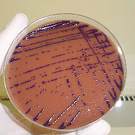
Chromobacterium is a genus of gram-negative rods. There are at least two known species within the genus, Chromobacterium violaceum and Chromobacterium subtsugae the latter was discovered by Agricultural Research Scientists (ARS) in Beltsville, Maryland.
Common Species are as follows:-
Chromobacterium haemolyticum
Chromobacterium piscinae
Chromobacterium pseudoviolaceum
Chromobacterium subtsugae
Chromobacterium vaccinii
Chromobacterium violaceum
The bacteria is used in Production of restriction endonuclease
C. violaceum produces a number of interesting proteins. They include paraquat-inducible proteins, drug and heavy-metal-resistance proteins, multiple chitinases, and proteins for the detoxification of xenobiotics. All of these proteins and metabolites may have biotechnological applications. Research is currently being performed to acknowledge these assumptions.
In addition, there are assumptions that Chromobacterium violaceum strains seem to mine for gold from soil through the cyanide produced by bacterium. The produced cyanide reacts with gold to from a complex anion [Au(CN)2]- in which gold can be easily purified after the complex anion has dissociated in aqueous solution.


Citrobacter is a genus of Gram-negative coliform bacteria in the Enterobacteriaceae family.The species C. amalonaticus, C. koseri, and C. freundii can use citrate as a sole carbon source. Citrobacter species are differentiated by their ability to convert tryptophan to indole, ferment lactose, and use malonate.
Common Species are as follows:-
C. amalonaticus
C. braakii
C. diversus
C. farmeri
C. freundii
C. gillenii
C. koseri
C. murliniae
C. rodentium
C. sedlakii
C. werkmanii
C. youngae
The bacteria is used in Bioaccumulation of Zinc and Chromium
Detection of Phytase
Citrobacter shows the ability to accumulate uranium by building phosphate complexes.
These bacteria can be found almost everywhere in soil, water, wastewater, etc. They can also be found in the human intestine.
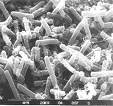

Clostridium is a genus of Gram-positive bacteria belonging to the Firmicutes. They are obligate anaerobes capable of producing endospores.Individual cells are rod-shaped, which gives them their name, from the Greek kloster or spindle. These characteristics traditionally defined the genus; but many species originally classified as Clostridium have been reclassified in other genera.
Common Species are as follows:-
C. acetobutylicum
C. argentinense
C. aerotolerans
C. baratii
C. beijerinckii
C. bifermentans
C. botulinum
C. butyricum
C. cadaveris
C. cellulolyticum
C. chauvoei
C. clostridioforme
C. colicanis
C. difficile
C. estertheticum
C. fallax
C. feseri
C. formicaceticum
C. histolyticum
C. innocuum
C. kluyveri
C. ljungdahlii
C. lavalense
C. leptum
C. methylpentosum
C. novyi
C. oedematiens
C. paraputrificum
C. perfringens (Alias: C. welchii)
C. phytofermentans
C. piliforme
C. ragsdalei
C. ramosum
C. scatologenes
C. septicum
C. sordellii
C. sporogenes
C. sticklandii
C. tertium
C. tetani
C. thermocellum
C. thermosaccharolyticum
C. tyrobutyricum
The bacteria is used in Genes from C. thermocellum have been inserted into transgenic mice to allow the production of endoglucanase. The experiment was intended to learn more about how the digestive capacity of monogastric animals could be improved.
Nonpathogenic strains of Clostridium may help in the treatment of diseases such as cancer. Research shows that Clostridium can selectively target cancer cells. Some strains can enter and replicate within solid tumors. Clostridium could, therefore, be used to deliver therapeutic proteins to tumours. This use of Clostridium has been demonstrated in a variety of preclinical models.
Commercial uses
C. thermocellum can use lignocellulosic waste and generate ethanol, thus making it a possible candidate for use in production of ethanol fuel. It also has no oxygen requirement and is thermophilic, which reduces cooling cost.
The Comamonas are a genus of Proteobacteria. Like all Proteobacteria, they are Gram-negative bacteria. The Comamonas are aerobic organism and motile by using bipolar or polar tufts of 1–5 flagella.
Common Species are as follows:-
C. acidovorans
C. aquatica
C. badia
C. composti
C. denitrificans
C. granuli
C. guangdongensis
C. kerstersii
C. koreensis
C. nitrativorans
C. odontotermitis
C. terrae
C. terrigena
C. testosteroni
C. thiooxydans
C. zonglianii
The bacteria is used in Comamonas are aerobic organism and motile by using bipolar or polar tufts of 1–5 flagella.
Production of L-Glutamic acid.


Corynebacterium is a genus of Gram-positive, rod-shaped bacteria. They are widely distributed in nature and are mostly innocuous. Some are useful in industrial settings such as C. glutamicum. Others can cause human disease. C. diphtheriae, for example, is the pathogen responsible for diphtheria.
Common Species are as follows:-
C. accolens
C. afermentans
C. ammoniagenes
C. amycolatum
C. argentoratense
C. aquaticum
C. auris
C. bovis
C. diphtheriae
C. equi (now Rhodococcus equi)
C. flavescens
C. glucuronolyticum
C. glutamicum
C. granulosum
C. haemolyticum
C. halofytica
C. jeikeium (group JK)
C. macginleyi
C. matruchotii
C. minutissimum
C. parvum (Propionibacterium acnes)
C. paurometabolum
C. propinquum
C. pseudodiphtheriticum (C. hofmannii)
C. pseudotuberculosis
(C. ovis)
C. pyogenes
C. urealyticum (group D2)
C. renale
C. spec
C. striatum
C. tenuis
C. ulcerans
C. urealyticum
C. xerosis
The bacteria is used in Industrial uses
Nonpathogenic species of Corynebacterium are used for very important
industrial applications, such as the production of amino acids, nucleotides,
and other nutritional factors, bioconversion of steroids; degradation of
hydrocarbons; cheese aging; and production of enzymes. Some species produce metabolites similar to antibiotics: bacteriocins of the corynecin-linocin type, antitumor agents, etc. One of the most studied species is C. glutamicum, whose name refers to its capacity to produce glutamic acid in aerobic conditions. It is used in the foods industry as monosodium glutamate (MSG) in the production of soy sauce and yogurt.
Species of Corynebacterium have been used in the mass production of various amino acids including glutamic acid, a food additive that is made at a rate of 1.5 million tons/ year. The metabolic pathways of Corynebacterium have been further manipulated to produce lysine and threonine.
Degradation of m and p-nitrophenol
Production of ADP, Production of 5’-Inosinic acid, L-Isoleucine
Production of Flavin-ademine dinucleotide, L-Glutamic acid
Production of L-Glutamic acid
Production of single cell protein

Curtobacterium is a genus of bacteria of the order Actinomycetales. They are Gram-positive soil organisms.
Common Species are as follows:-
C. albidum
C. citreum
C. flaccumfaciens
C. herbarum
C. luteum
C. plantarum
C. pusillum
C. albidum

Cupriavidus is a genus of bacteria that includes the former genus Wautersia. They are characterized as Gram-negative, motile, rod-shaped organisms with oxidative metabolism. They possess peritrichous flagella, are obligate aerobic organisms, and are chemoorganotrophic or chemolithotrophic. Resistance to metals (including copper) has been described. These organisms have been found in both soil and in clinical isolates.
C. alkaliphilus
C. basilensis
C. campinensis
C. gilardii
C. laharis
C. metallidurans
C. numazuensis
C. oxalaticus
C. pampae
C. pauculus
C. pinatubonensis
C. respiraculi


Cytophaga is a genus of Gram-negative, gliding, rod-shaped bacteria.
Common Species are as follows:-
C. columnaris
C. hutchinsonii
C. johnsonae
C. psychrophila
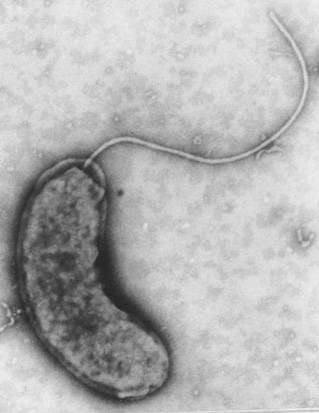
Desulfovibrio is a genus of Gram negative sulfate-reducing bacteria. Desulfovibrio species are commonly found in aquatic environments with high levels of organic material, as well as in water-logged soils, and form major community members of extreme oligotrophic habitats such as deep granitic fractured rock aquifers.
Common Species are as follows:-
D. acrylicus
D. aerotolerans
D. aespoeensis
D. africanus
D. alaskensis
D. alcoholivorans
D. alkalitolerans
D. aminophilus
D. arcticus
D. baarsii
D. baculatus
D. bastinii
D. bizertensis
D. burkinensis
D. butyratiphilus
D. capillatus
D. carbinolicus
D. carbinoliphilus
D. cuneatus
D. dechloracetivorans
D. desulfuricans
D. ferrireducens
D. frigidus
D. fructosivorans
D. furfuralis
D. gabonensis
D. giganteus
D. gigas
D. gracilis
D. halophilus
D. hydrothermalis
D. idahonensis
D. indonesiensis
D. inopinatus
D. intestinalis
D. legallii
D. alitoralis
D. longreachensis
D. longus
D. magneticus
D. marinus
D. marinisediminis
D. marrakechensis
D. mexicanus
D. multispirans
D. oceani
D. oxamicus
D. oxyclinae
D. paquesii
D. piezophilus
D. pigra
D. portus
D. profundus
D. psychrotolerans
D. putealis
D. salixigens
D. sapovorans
D. senezii
D. simplex
D. sulfodismutans
D. termitidis
D. thermophilus
D. tunisiensis
D. vietnamensis
D. vulgaris
D. zosterae
The bacteria is used in Anaerobic; reduces sulfate, uranium, and toxic metals; corrodes iron piping; “sours” petroleum with hydrogen sulfide.
High potential for bioremediation through metal and sulfate reduction and sulfate utilization.

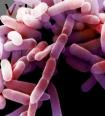
Enterobacter is a genus of common Gram-negative, facultatively anaerobic, rod-shaped, non-spore-forming bacteria of the family Enterobacteriaceae. Several strains of these bacteria are pathogenic and cause opportunistic infections in immunocompromised (usually hospitalized) hosts and in those who are on mechanical ventilation. The urinary and respiratory tracts are the most common sites of infection. The genus Enterobacter is a member of the coliform group of bacteria. It does not belong to the fecal coliforms (or thermotolerant coliforms) group of bacteria, unlike Escherichia coli, because it is incapable of growth at 44.5 °C in the presence of bile salts.
Common Species are as follows:-
E. aerogenes
E. amnigenus
E. agglomerans
E. arachidis
E. asburiae
E. cancerogenous
E. cloacae
E. cowanii
E. dissolvens
E. gergoviae
E. helveticus
E. hormaechei
E. intermedius
E. kobei
E. ludwigii
E. mori
E. nimipressuralis
E. oryzae
E. pulveris
E. pyrinus
E. radicincitans
E. taylorae
E. turicensis
E. sakazakii Enterobacter soli
The bacteria is used in the genus Enterobacter ferments lactose with gas production during a 48-hour incubation at 35-37 °C in the presence of bile salts and detergents. It is oxidase-negative, indole-negative, and urease-variable.
Phosphorelation of Xylose
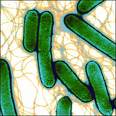

Erwinia is a genus of Enterobacteriaceae bacteria containing mostly plant pathogenic species which was named for the famous plant pathologist, Erwin Frink Smith. It contains gram-negative bacteria related to Escherichia coli, Shigella, Salmonella and Yersinia. They are primarily rod-shaped bacteria.
Common Species are as follows:-
Erwinia amylovora
Erwinia aphidicola
Erwinia billingiae
Erwinia mallotivora
Erwinia papayae
Erwinia persicina
Erwinia psidii
Erwinia pyrifoliae
Erwinia rhapontici
Erwinia toletana
Erwinia tracheiphila
Candidatus Erwinia dacicola
The bacteria is used in Production of asparaginase, Glutaminase


Escherichia is a genus of Gram-negative, nonspore forming, facultatively anaerobic, rod-shaped bacteria from the family Enterobacteriaceae. In those species which are inhabitants of the gastrointestinal tracts of warm-blooded animals, Escherichia species provide a portion of the microbially derived vitamin K for their hosts. A number of the species of Escherichia are pathogenic. The genus is named after Theodor Escherich, the discoverer of Escherichia coli.
Common Species are as follows:-
E. albertii
E. blattae
E. coli
E. fergusonii
E. hermannii
E. vulneris
The bacteria is used in Production of Amidase, Amino acid decarboxylase, Antibiotics etc.
Assay of Antimicrobial activity, Vitamin B12
Production of Alpha-ketoglutaric acid
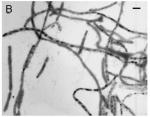

Flavobacterium is a genus of Gram-negative, non-motile and motile, rod-shaped bacteria that consists of 130 recognized species, as well as three newly proposed species (F. gondwanense, F. salegens, and F. scophthalmum). Flavobacteria are found in soil and fresh water in a variety of environments. Several species are known to cause disease in freshwater fish.
Common Species are as follows:-
F. akiainvivens
F. aquatile
F. aureus
F. balustinum
F. branchiophilum
F. breve
F. columnare
F. flevense
F. gondwanense
F. hydatis
F. johnsoniae
F. multivorum
F. okeanokoites
F. pectinovorum
F. psychrophilum
F. saccharophilum
F. salegens
F. scophthalmum
F. succinans
Flavobacterium dehydrogenans
The bacteria is used in Production of Carotenoids.
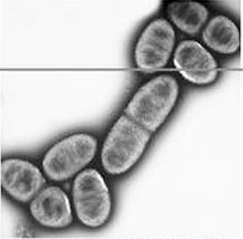
Gluconobacter oxydans, previously known as Acetobacter suboxydans, are Gram-negative rod or oval shaped bacteria ranging from about 0.5 to 0.8mm x to 4.2mm. The name oxy from Gluconobacter oxydans is Latin for 'sharp' and 'acidic', and dans is 'giving'. They tend to have a small genome size because of their limited metabolic abilities. These abilities include partially oxidizing carbohydrates and alcohols through the process of oxidative fermentation, and they can be used for synthesis of Vitamin C, D-gluconis acid and ketogluconic acids. G. oxydans are found in flowers, fruits, garden soil, alcoholic beverages, cider, and soft drinks because they contain strains capable of growing in high concentrations of sugar solutions and low pH values (optimal pH for growth is 5.5-6.0). Although they are able to grow in extreme conditions, their growth rate is slow and the concentration of mature cells are low. The importance of G. oxydans is its ability to incompletely oxidize carbon substrates such as D-sorbitol, glycerol, D-fructose, and D-glucose for the use in biotechnological instruments.
Common Species are as follows:-
Gluconobacter albidus
Gluconobacter asaii
Gluconobacter cerevisiae
Gluconobacter cerinus
Gluconobacter frateurii
Gluconobacter japonicas
Gluconobacter kanchanaburiensis
Gluconobacter kondonii
Gluconobacter oxydans is useful for a number of biotechnological applications.
It goes through the process of oxidizing glycerol to dihydroxyacetone (DHA). It uses a membrane-bound glycerol dehydrogenase to oxidize sorbitol, gluconate, and arabitol.
G. oxydans contain many membrane-bound dehydrogenases that are very useful for the incomplete oxidation of substrates in biotechnological experiments.
Production of vitamin C, sorbitol, xylitol, and vinegar are aided with the addition of G. oxydans.
Biosensors using G. oxydans can be used to measure substrate concentration as a biosensor. With the addition of G. oxydans in microbial biosensors the results of the biosensor response is faster due to the periplasmic localization of PQQ-dependent enzymes. Ehtanol in air, glycerol in fermentation media, and glucose in humans are just a few of the exciting applications currently being researched.
Current Research
Gluconobacter oxydans can be used to convert glycerol to dihydroxyacetone. The study shows the possible production of this organism using agricultural byproducts. Since
G. oxydans thrive in environments with high sugar concentrations, the medium used for the growth of
G. oxydans cells are corn meal hydrolysate and corn steep liquor instead of sorbitol and yeast which are the usual components found. The results of the experiment found that the optimal medium contained "80 g/L reducing sugar, 25 g/L corn steep liquor, and 10 g/L glycerol. The cell mass was about 4.22 g/L and the glycerol dehydrogenase activity was about 5.23 U/mL. For comparison, the cell mass was about 4.0 g/L and the glycerol dehydrogenase activity was about 5.35 U/mL cultured in sorbitol and yeast extract medium. Clearly, corn meal hydrolysate and corn steep liquor medium is just as effective in performance as the sorbitol and yeast medium, but cost is 15% less.
Another study using G. oxydans is the application of this organism in biosensors. It monitors the bacterial bioconversion of glycerol to 1,3-propanediol. The use of
G. oxydans gives high detection performance and high reliability of 1,3-PD detection. 'This system was used to monitor the concentration of 1,3-PD during a real bioprocess. Results from biosensor assays of 1,3-PD in bioprocess samples taken throughout the fermentation were in a very good agreement with results obtained from reference HPLC assays (R squared value equals 0.999).
A study of varying the many membrane-bound glucose oxidation system in Gluconobacter oxydans increases gluconate and acid accumulation.
G. oxydans catalyzes the oxidation of glucose to gluconic acid then to 5-keto-D-gluconic acid, which is useful in industry so the increased production of
G. oxydans is important. A mutant strain MF1 was used to help 5-KGA accumulate in the medium, therefore increasing the gluconic acid formation.
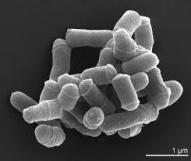
Gordonia is a genus of bacterium in the Actinobacteria, the same lineage that includes Mycobacterium tuberculosis.Gordonia rubripertincta, like most Actinobacteria, is gram positive bacterium (high GC content) that is typically found in soil. It is an aerobic organism and forms branching hyphae resembling mycelia.G. rubripertincta is nonmotile, and partially acid-alcohol fast – its cell wall is rich in mycolic acid. It is important because it has the ability to degrade hydrocarbons, specifically polycyclic aromatic hydrocarbons (PAH) which can act as mutagens, and is thus being research as a potential mechanism for the bioremediation of soil. It can also act as a rare opportunistic pathogen, particularly in patients that are already immunocompromised. G. rubripertincta has the ability to produce mycobactin, a lipid factor that promotes growth.
Common Species are as follows:-
Gordonia rubripertincta
Gordnia rubropertincta
G. sputi
G. bronchialis
The bacteria is used in Oxidation /utilization of carbohydrates
G. rubripertincta is nonmotile, and partially acid-alcohol fast – its cell wall is rich in mycolic acid. It is important because it has the ability to degrade hydrocarbons, specifically polycyclic aromatic hydrocarbons (PAH) which can act as mutagens, and is thus being research as a potential mechanism for the bioremediation of soil. It can also act as a rare opportunistic pathogen, particularly in patients that are already immunocompromised. G. rubripertincta has the ability to produce mycobactin, a lipid factor that promotes growth.
G. rubripertincta uses an oxidative carbohydrate metabolism. It is one of the few isolated microbes that is capable of transforming s-triazines; it has the ability to produce an s-triazine hydrolase that deaminates melamine and dechlorinates atrazine. G. rubripertincta also produces a number of useful compounds including L-lysine and biosurfactants, which allow for the degradation of hydrophobic compounds.

Hafnia is the genus of the
Enterobacteriaceae family whose only species is the Gram-negative, facultatively anaerobic, rod-shaped bacterium
Hafnia alvei.
H. alvei is a commensal of the human gastrointestinal tract and not normally pathogenic, but may cause disease in immunocompromised patients. It is often resistant to multiple antibiotics, including the aminopenicillins.
Common Species are as follows:-
Hafnia alvei
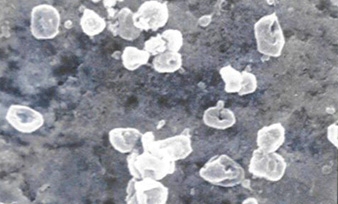
Haloferax is a genus of the Halobacteriaceae.
Common Species are as follows:-
H. alexandrinus
H. denitrificans
H. elongans
H. gibbonsii
H. larsenii
H. lucentense
H. mediterranei
H. mucosum
H. prahovense
H. sulfurifontis
H. volcanii
The bacteria is used in Oxidation /utilization of carbohydrates.
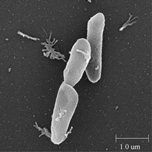
Hydrogenomonas a genus of short rod-shaped soil bacteria (family Methanomonadaceae) that are facultative autotrophs capable of oxidizing hydrogen to form water and using carbon dioxide as a source of carbon for growth.
Hydrogenomonas sp.
The bacteria is used in Fermentation of Fructose
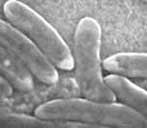
Janthinobacterium is a genus of Gram-negative soil bacteria. The name is from Latin janthinus, which means "violet" or "violet-blue" + bacterium, which means rod or staff.Janthinobacterium lividum is an aerobic, gram-negative, soil-dwelling bacterium that has a distinctive dark-violet (almost black) color. This color is due to a compound called violacein, which is produced when glycerol is metabolized as a carbon source. Violacein has anti-bacterial, anti-viral, and anti-fungal properties. Its anti-fungal properties are of particular interest since J. lividum is found on the skin of certain amphibians, including the red-backed salamander (Plethodon cinereus), where it prevents infection by the devastating chytrid fungus (Batrachochytrium dendrobatidis).
Common Species are as follows:-
J. agaricidamnosum
J. lividum
The bacteria is used in Isolation of D-Fucosamine, Guanosine 2-3’ cyclic phosphate.


Klebsiella is a genus of non-motile, Gram-negative, oxidase-negative, rod-shaped bacteria with a prominent polysaccharide-based capsule. It is named after the German microbiologist Edwin Klebs (1834–1913). Klebsiella species are found everywhere in nature. This is thought to be due to distinct sublineages developing specific niche adaptations, with associated biochemical adaptations which make them better suited to a particular environment. They can be found in water, soil, plants, insects, animals and humans.
Common Species are as follows:-
K. granulomatis
K. oxytoca
K. pneumoniae
K. terrigena
K. planticola
The bacteria is used in Production of Histamine, 5’-nucleotides, Pullulanase
Assay of Clavulanic acid
Production of Acetoin diacetyl
In plant systems, Klebsiella can be found in a variety of plant hosts. K. pneumoniae and K. oxytoca are able to fix atmospheric nitrogen into a form that can be used by plants, thus are called associative nitrogen fixers or diazotrophs.
Medical Care
Initial antibiotic selection
Klebsiella organisms are resistant to multiple antibiotics. This is thought to be a plasmid-mediated property. Length of hospital stay and performance of invasive procedures are risk factors for acquisition of these strains.
Treatment depends on the organ system involved. In general, initial therapy of patients with possible bacteremia is empirical. The choice of a specific antimicrobial agent depends on local susceptibility patterns. Once bacteremia is confirmed, treatment may be modified.K granulomatis genital and mucocutaneous infections are preferably treated with doxycycline for 3 weeks and until the lesions are healed. Consider adding gentamicin if no improvement is noted within the first 36-72 hours. Alternative antibiotics include azithromycin, ciprofloxacin, erythromycin, and trimethoprim/sulfamethoxazole.
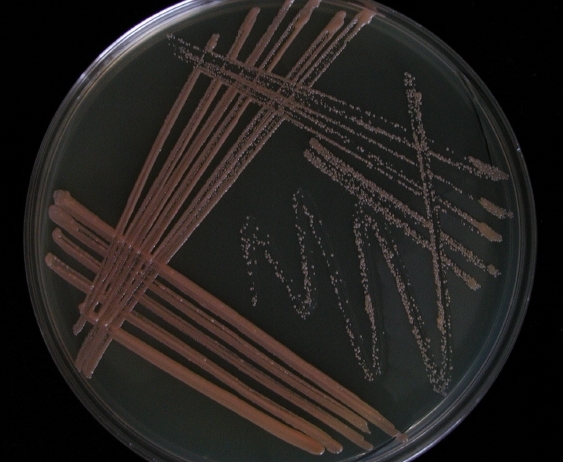
Kocuria is a genus of Gram positive bacteria in the phylum Actinobacteria, including the sequenced species Kocuria rhizophila.
Common Species are as follows:-
Kocuria assamensis
Kocuria aegyptia
Kocuria gwangalliensis
Kocuria atrinae
Kocuria carniphila
Kocuria flava
Kocuria palustris
Kocuria palustris PEL
Kocuria halotolerans
Kocuria himachalensis
Kocuria koreensis
Kocuria kristinae
Kocuria marina
Kocuria polaris
Kocuria rhizophila
Kocuria rosea
Kocuria salsicia
Kocuria sediminis
Kocuria turfanensis
Kocuria varians

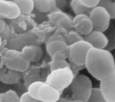
Lactobacillus, also called Döderlein's bacillus, is a genus of Gram-positive facultative anaerobic or microaerophilic rod-shaped bacteria.They are a major part of the lactic acid bacteria group, named as such because most of its members convert lactose and other sugars to lactic acid. In humans they are present in the vagina and the gastrointestinal tract, where they make up a small portion of the gut flora.They are usually benign, except in the mouth where they have been associated with cavities and tooth decay (dental caries). Many species are prominent in decaying plant material. The production of lactic acid makes its environment acidic, which inhibits the growth of some harmful bacteria. Several members of the genus have had their genome sequenced.
Common Species are as follows:-
L. acetotolerans
L. acidifarinae
L. acidipiscis
L. acidophilus
L. agilis
L. algidus
L. alimentarius
L. amylolyticus
L. amylophilus
L. amylotrophicus
L. amylovorus
L. animalis
L. antri
L. apodemi
L. aviarius
L. bifermentans
L. brevis
L. buchneri
L. camelliae
L. casei
L. catenaformis
L. ceti
L. coleohominis
L. collinoides
L. composti
L. concavus
L. coryniformis
L. crispatus
L. crustorum
L. curvatus
L. delbrueckii subsp. bulgaricus
L. delbrueckii subsp. delbrueckii
L. delbrueckii subsp. lactis
L. dextrinicus
L. diolivorans
L. equi
L. equigenerosi
L. farraginis
L. farciminis
L. fermentum
L. fornicalis
L. fructivorans
L. frumenti
L. fuchuensis
L. gallinarum
L. gasseri
L. gastricus
L. ghanensis
L. graminis
L. hammesii
L. hamsteri
L. harbinensis
L. hayakitensis
L. helveticus
L. hilgardii
L. homohiochii
L. iners
L. ingluviei
L. intestinalis
L. jensenii
L. johnsonii
L. kalixensis
L. kefiranofaciens
L. kefiri
L. kimchii
L. kitasatonis
L. kunkeei
L. leichmannii
L. lindneri
L. malefermentans
L. mali
L. manihotivorans
L. mindensis
L. mucosae
L. murinus
L. nagelii
L. namurensis
L. nantensis
L. oligofermentans
L. oris
L. panis
L. pantheris
L. parabrevis
L. parabuchneri
L. paracasei
L. paracollinoides
L. parafarraginis
L. parakefiri
L. paralimentarius
L. paraplantarum
L. pentosus
L. perolens
L. plantarum
L. pontis
L. protectus
L. psittaci
L. rennini
L. reuteri
L. rhamnosus
L. rimae
L. rogosae
L. rossiae
L. ruminis
L. saerimneri
L. sakei
L. salivarius
L. sanfranciscensis
L. satsumensis
L. secaliphilus
L. sharpeae
L. siliginis
L. spicheri
L. suebicus
L. thailandensis
L. ultunensis
L. vaccinostercus
L. vaginalis
L. versmoldensis
L. vini
L. vitulinus
L. zeae
L. zymae
The bacteria is used in Production of Acetic acid, lactic acid, Fermentation of hexose
Assay of Amino acid, Arginin, Biotin, Methionin, Cystiene etc
Production of Alanine
Production of acidophilus milk
Production and assay of Alanine, Histidine etc.
Production of amino acids
Assay of Arginin, Folic acid
Some Lactobacillus species are active in the production of yogurt, cheese, sauerkraut, pickles, beer, wine, cider, kimchi, cocoa, kefir, and other fermented foods, as well as animal feeds.


Leuconostoc is a genus of Gram-positive bacteria, placed within the family of Leuconostocaceae. They are generally ovoid cocci often forming chains. Leuconostoc spp. are intrinsically resistant to vancomycin and are catalase-negative (which distinguishes them from staphylococci). All species within this genus are heterofermentative and are able to produce dextran from sucrose.
Common Species are as follows:-
L. carnosum
L. citreum
L. durionis
L. fallax
L. ficulneum
L. fructosum
L. garlicum
L. gasicomitatum
L. gelidum
L. inhae
L. kimchii
L. lactis
L. mesenteroides
L. pseudoficulneum
L. pseudomesenteroides
The bacteria is used as Industrial Uses
Members of Leuconstoc spp. are very often used in production of fermented foods because of their ability to produce lactic acid and diacetyl.
Leuconstoc mesenteroides is used primarily in saurkraut production, where its heterofermentative abilities are used in the first stage of four to convert glucose and fructose in cabbage to lactic acid, mannitol, acetic acid, ethanol, and carbon dioxide. In fermented milk and meat products, diacetyl is responsible for butter flavor and the other fermentation products aid in the preservation and palatability of the food. Also,
Leuconstoc carnosum produces bacteriocins, and these are used to inhibit Listeria monosytogenes in dairy and meat products.
Production of Dextran, Polysacchardie
Assay of Lysine
Assay of tomato juice factor.


Micrococcus is a genus of bacteria in the Micrococcaceae family. Micrococcus occurs in a wide range of environments, including water, dust, and soil. Micrococci have Gram-positive spherical cells ranging from about 0.5 to 3 micrometers in diameter and typically appear in tetrads. They are catalase positive, oxidase positive, indole negative and citrate negative. Micrococcus has a substantial cell wall, which may comprise as much as 50% of the cell mass. The genome of Micrococcus is rich in guanine and cytosine (GC), typically exhibiting 65 to 75% GC-content. Micrococci often carry plasmids (ranging from 1 to 100 MDa in size) that provide the organism with useful traits.
Common Species are as follows:-
Micrococcus antarcticus
Micrococcus flavus
Micrococcus luteus
Micrococcus lylae
Micrococcus mucilaginosis
Micrococcus roseus
Micrococcus mortus
The bacteria is used in Production of 6-aminopenicillianic acid
Assay of bacitracin, Chlorampheicol, Chlorhexidine diacetate, Lysozyme, Phenylmercuric acetate, Phenylmercuric nitrate, amphomycin
Assay of bacitracin, Chlorhexidine diacetate, gluconate, Phenylmercuric acetate, Phenylmercuric nitrate
Production of L-Glutamic acid.

Micromonospora is a genus of bacteria of the family Micromonosporaceae. They are gram-positive, spore-forming, generally aerobic, and form a branched mycelium; they occur as saprotrophic forms in soil and water. Various species are sources of aminoglycoside antibiotics, which spellings often ends with -micin, unlike most other aminoglycoside names that end with -mycin to highlight the very different species from which they originate (e.g. neomycin and streptomycin, produced by Streptomyces spp.).
Common Species are as follows:-
Micromonospora aurantiaca
Micromonospora auratinigra
Micromonospora avicenniae
Micromonospora carbonacea
Micromonospora chaiyaphumensis
Micromonospora chalcea
Micromonospora chersina
Micromonospora chokoriensis
Micromonospora citrea
Micromonospora coerulea
Micromonospora coriariae
Micromonospora coxensis
Micromonospora cremea
Micromonospora eburnea
Micromonospora
echinaurantiaca
Micromonospora echinofusca
Micromonospora echinospora
Micromonospora endolithica
Micromonospora equina
Micromonospora fulviviridis
Micromonospora gallica
Micromonospora haikouensis
Micromonospora halophytica
Micromonospora halotolerans
Micromonospora humi
Micromonospora inositola
Micromonospora inyonensis
Micromonospora
kangleipakensis
Micromonospora krabiensis
Micromonospora lupini
Micromonospora marina
Micromonospora maritima
Micromonospora
matsumotoense
Micromonospora mirobrigensis
Micromonospora
narathiwatensis
Micromonospora nigra
Micromonospora
olivasterospora
Micromonospora pallida
Micromonospora
pattaloongensis
Micromonospora peucetia
Micromonospora pisi
Micromonospora polyrhachis
Micromonospora purpureochromogenes
Micromonospora rhizosphaerae
Micromonospora rifamycinica
Micromonospora rosaria
Micromonospora saelicesensis
Micromonospora sagamiensis
Micromonospora schwarzwaldensis
Micromonospora sediminicola
Micromonospora siamensis
Micromonospora sonneratiae
Micromonospora tulbaghiae
Micromonospora viridifaciens
Micromonospora wenchangensis
Micromonospora yangpuensis
Micromonospora zamorensis
Micromonospora species have long been recognized as important sources of antibiotics and also for their unusual spores. However, their involvement in plant-microbe associations is poorly understood although several studies demonstrate that Micromonospora species function in biocontrol, plant growth promotion, root ecology, and in the breakdown of plant cell wall material. Our knowledge of this generally understudied group of actinomycetes has been greatly advanced by the increasing number of reports of their associations with plants, by the deployment of DNA cloning and molecular systematics techniques, and by the recent application of whole genome sequencing. Efforts to annotate the genomes of several Micromonospora species are underway. This information will greatly augment our knowledge of these versatile microorganisms.
Production of aminoglycoside antibiotic G-418, gentamicin
Production of D-amino acid oxidase
Production of Halomycin
Production of rosaramycin
Production of rufinosporin
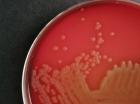

Moraxella is a genus of Gram-negative bacteria in the Moraxellaceae family. It is named after the Swiss ophthalmologist Victor Morax. The organisms are short rods, coccobacilli or, as in the case of Moraxella catarrhalis, diplococci in morphology, with asaccharolytic, oxidase-positive and catalase-positive properties. Moraxella catarrhalis is the clinically most important species under this genus.
Common Species are as follows:-
M. atlantae
M. boevrei
M. bovis
M. bovoculi
M. canis
M. caprae
M. catarrhalis
M. caviae
M. cuniculi
M. equi
M. lacunata
M. lincolnii
M. nonliquefaciens
M. oblonga
M. osloensis
M. pluranimalium
M. porci
M. saccharolytica
The bacteria is used in production of restriction endonuclease.


Mycobacterium is a genus of Actinobacteria, given its own family, the Mycobacteriaceae. The genus includes pathogens known to cause serious diseases in mammals, including tuberculosis (Mycobacterium tuberculosis) and the classic Hansen's strain of leprosy (Mycobacterium leprae). The Greek prefix myco- means "fungus," alluding to the way mycobacteria have been observed to grow in a mold-like fashion on the surface of liquids when cultured.
Common Species are as follows:-
M. tuberculosis
M. bovis
M. bovis BCG
M. africanum
M. canetti
M. caprae
M. microti
M. pinnipedii
Mycobacterium avium
M. palustre
M. kubicae
M. parascrofulaceum
M. heidelbergense
M. interjectum
M. simiae
The bacteria is used in Degradation of Cycloparaffinic hydrocarbons,
Oxidation /Utilization of C2-C10 Hydrocarbons, Propane
Testing of aerial bactericides
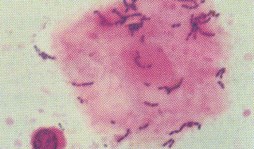
Mycoplana is a genus of bacteria. It is among the gram-negative bacteria. The cells are slightly curved or irregularly shaped rods. Initially, the cells can form filaments, which can also be branched. After some time, the filaments break up into irregular rods. Mycoplana is motile by peritrichous flagella.
Common Species are as follows:-
M. dimorpha
M. ramosa
Mycoplana bullata
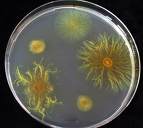
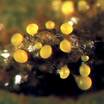
Myxococci are Gram-negative, spore-forming,chemoorganotrophic,obligate aerobes. They are elongated rods with rounded or tapered ends, and they are nonflagellated.
Common Species are as follows:-
Micrococcus luteus
Micrococcus flavus
Micrococcus glutamicus
The bacteria is used in production of 6-aminopenicillianic acid
Assay of bacitracin, Chlorampheicol, Chlorhexidine diacetate, Lysozyme, Phenylmercuric acetate, Phenylmercuric nitrate, amphomycin
Assay of bacitracin, Chlorhexidine diacetate, gluconate, Phenylmercuric acetate, Phenylmercuric nitrate
Production of L-Glutamic acid
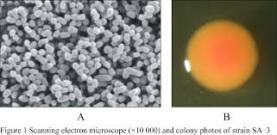
All Nesterenkonia species are
Gram-positive, strictly aerobic
and moderately halophilic or
halotolerant (and some species
are alkaliphilic or alkalitolerant).
Common Species are as follows:-
Nesterenkonia occidentalis
The bacteria is used in production of alpha amylase.

Nitrobacter is a genus of mostly rod-shaped, gram-negative, and chemoautotrophic bacteria.Nitrobacter plays an important role in the nitrogen cycle by oxidizing nitrite into nitrate in soil. Unlike plants, where electron transfer in photosynthesis provides the energy for carbon fixation, Nitrobacter uses energy from the oxidation of nitrite ions, NO2−, into nitrate ions, NO3−, to fulfill their energy needs. Nitrobacter fixes carbon dioxide via the Calvin cycle for their carbon requirements.
Common Species are as follows:-
N. alkalicus
N. hamburgensis
N. vulgaris
N. winogradskyi
Nitrobacter winogradskyi along with other nitrobacter, they allow for the removal of significant amounts of nitrogen from effluent wastewater through the use of biofilms.
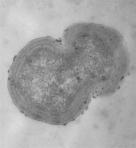
Nitrosomonas is a genus comprising rod shaped chemoautotrophic bacteria.
This organism oxidizes ammonia into nitrite as a metabolic process. Nitrosomonas are useful in bioremediation. They are important in the nitrogen cycle by increasing the availability of nitrogen to plants while limiting carbon dioxide fixation. The genus is found in soil, freshwater, and on building surfaces, especially in areas that contains high levels of nitrogen compounds.
Common Species are as follows:-
N. aestuarii
N. communis
N. europaea
N. eutropha
N. halophila
N. marina
N. nitrosa
N. oligotropha
N. ureae
The bacteria is used in Nitrifying bacteria such as Nitrosomonas play an important role in providing nitrogen to plants and limiting carbon dioxide fixation. They are found widely distributed in soil or water, where there are large amounts of ammonia, such as lakes or streams into which treated and untreated sewage is pumped. Nitrosomonas does whatever it can to avoid light, and so may appear as clumps of slime in order to protect itself. It is often found on the walls of stone buildings or on the surface of monuments, where its production of nitric acid from the air may cause erosion of the stone beneath. While in some respects Nitrosomonas' effect on ammonia is positive, agriculturally it can pose a problem. Nitrification, the cycle in which Nitrosomonas acts as the initiator by oxidizing ammonia to nitrite, can leave the nitrate in the soil more susceptible to leaching and therefore less available to plants. There are some nitrification inhibitors which slow the nitrification process, making it less possible for the nitrate to be lost due to leaching.

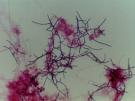
Nocardia is a genus of weakly staining Gram-positive, catalase-positive, rod-shaped bacteria. It forms partially acid-fast beaded branching filaments (acting as fungi, but being truly bacteria). It contains a total of 85 species. Some species are nonpathogenic, while others are responsible for nocardiosis.Nocardia species are found worldwide in soil rich in organic matter. In addition, they are oral microflora found in healthy gingiva, as well as periodontal pockets. Most Nocardia infections are acquired by inhalation of the bacteria or through traumatic introduction.
Common Species are as follows:-
N. aerocolonigenes
N. africana
N. argentinensis
N. asteroides
N. blackwellii
N. brasiliensis
N. brevicatena
N. carnea
N. caviae
N. cerradoensis
N. corallina
N. cyriacigeorgica
N. dassonvillei
N. elegans
N. farcinica
N. nigiitansis
N. nova
N. opaca
N. otitidis-cavarium
N. paucivorans
N. pseudobrasiliensis
N. rubra
N. seriolae
N. transvelencesis
N. uniformis
N. vaccinii
N. veteran

A Gram-positive, aerobic, non-motile actinomycete, strain GW 14-1925T, that formed branched substrate and aerial mycelium was studied using a polyphasic approach.The genus Nonomuraea is a rare actinomycete taxon with a long taxonomic history, while its generic description was recently emended. The genus is less known among the rare actinomycete genera as its taxonomic position was revised several times. It can be found in diverse ecological niches, while most of its member species were isolated from soil samples. However, new trends to discover the genus in other habitats are increasing. Generic abundance of the genus was found to be dependent on geographical changes. Novel sources together with selective and invented isolation techniques might increase a chance to explore the genus and its novel candidates. Interestingly, some of its members have been revealed as a valuable source of novel metabolites for medical and industrial purposes. Broad-range of potent bioactive compounds including antimicrobial, anticancer, and antipsychotic substances, broad-spectrum antibiotics and biocatalysts can be synthesized by the genus. In order to investigate biosynthetic pathways of the bioactive compounds and self-resistant mechanisms to these compounds, the links from genes to metabolites have yet been needed for further discovery and biotechnological development of the genus Nonomuraea.
Common Species are as follows:-
Nonomuraea polychrome
Nonomuraea muscovyensis
Nonomuraea monospora
Nonomuraea pusilla

Oerskovia species are nocardia like bacteria that have been implicated as pathogens only rarely. These organisms are branched, gram-positive bacilli that are oxidase negative, catalase positive, and non-acid fast.
Common Species are as follows:-
Orskovia xantheneolytica

Paenibacillus is a genus of facultative anaerobic, endospore-forming bacteria, originally included within the genus Bacillus and then reclassified as a separate genus in 1993.Bacteria belonging to this genus have been detected in a variety of environments such as: soil, water, rhizosphere, vegetable matter, forage and insect larvae, as well as clinical samples.
Common Species are as follows:-
P. agarexedens
P. agaridevorans
P. alginolyticus
P. alkaliterrae
P. alvei
P. amylolyticus
P. anaericanus
P. antarcticus
P. assamensis
P. azoreducens
P. azotofixans
P. barcinonensis
P. borealis
P. brasilensis
P. brassicae
P. campinasensis
P. chinjuensis
P. chitinolyticus
P. chondroitinus
P. cineris
P. cookii
P. curdlanolyticus
P. daejeonensis
P. dendritiformis
P. durum
P. ehimensis
P. elgii
P. favisporus
P. glucanolyticus
P. glycanilyticus
P. gordonae
P. graminis
P. granivorans
P. hodogayensis
P. illinoisensis
P. jamilae
P. kobensis
P. koleovorans
P. koreensis
P. kribbensis
P. lactis
P. larvae
P. lautus
P. lentimorbus
P. macerans
P. macquariensis
P. massiliensis
P. mendelii
P. motobuensis
P. naphthalenovorans
P. nematophilus
P. odorifer
P. pabuli
P. peoriae
P. phoenicis
P. phyllosphaerae
P. polymyxa
P. popilliae
P. pulvifaciens
P. rhizosphaerae
P. sanguinis
P. stellifer
P. terrae
P. thiaminolyticus
P. timonensis
P. tylopili
P. turicensis
P. validus
P. vortex
P. vulneris
P. wynnii
There has been a rapidly growing interest in Paenibacillus spp. since many were shown to be important for agriculture and horticulture (e.g. P. polymyxa), industrial (e.g. P. amylolyticus), and medical applications (e.g. P. peoriate). These bacteria produce various extracellular enzymes such as polysaccharide-degrading enzymes and proteases, which can catalyze a wide variety of synthetic reactions in fields ranging from cosmetics to biofuel production. Various Paenibacillus spp. also produce antimicrobial substances that affect a wide spectrum of micro-organisms such as fungi, soil bacteria, plant pathogenic bacteria and even important anaerobic pathogens as Clostridium botulinum.


Pasteurella is a genus of Gram-negative, facultatively anaerobic bacteria.Pasteurella species are nonmotile and pleomorphic. Most species are catalase- and oxidase-positive. The genus is named after the French chemist and microbiologist, Louis Pasteur.
Common Species are as follows:-
P. aerogenes
P. anatis
P. avium
P. bettyae
P. caballi
P. canis
P. dagmatis
P. gallicida
P. gallinarum
P. granulomatis
P. langaaensis
P. lymphangitidis
P. mairii
P. multocida
P. oralis
P. pneumotropica
P. skyensis
P. stomatis
P. testudinis
P. trehalosi
P. ureae
P. volantium
The bacteria is used in assay of Amphoterecin B, Candicidin, Hamycin,
Oxidation/utilization of o-phthalic acid, salicyclic acid
Production of dextranase.


Paecilomyces is a genus of nematophagous fungus which kills harmful nematodes by pathogenesis, causing disease in the nematodes. Therefore the fungus can be used as a bio-nematicide to control nematodes by applying it to soil.
Common Species are as follows:-
Paecilomyces aegyptiacus
Paecilomyces aerugineus
Paecilomyces albus
Paecilomyces andoi
Paecilomyces antarcticus
Paecilomyces aspergilloides
Paecilomyces atrovirens
Paecilomyces aureocinnamomeus
Paecilomyces austriacus
Paecilomyces baarnensis
Paecilomyces borysthenicus
Paecilomyces breviramosus
Paecilomyces brunneolus
Paecilomyces burci
Paecilomyces byssochlamydoides
Paecilomyces canadensis
Paecilomyces carneus
Paecilomyces cinnabarinus
Paecilomyces cinnamomeus
Paecilomyces clavisporus
Paecilomyces cossus
Paecilomyces cremeoroseus
Paecilomyces cylindricosporus
Paecilomyces dactylethromorphus
Paecilomyces erectus
Paecilomyces eriophytis
Paecilomyces fimetarius
Paecilomyces formosa
Paecilomyces fulvus
Paecilomyces fuscatus
Paecilomyces griseoviridis
Paecilomyces guaensis
Paecilomyces gunnii
Paecilomyces hawkesii
Paecilomyces heliothis
Paecilomyces hibernicus
Paecilomyces huaxiensis
Paecilomyces indicus
Paecilomyces isarioides
Paecilomyces laeensis
Paecilomyces lecythidis
Paecilomyces longipes
Paecilomyces loushanensis
Paecilomyces major
Paecilomyces mandshuricus
Paecilomyces marquandii
Paecilomyces maximus
Paecilomyces musicola
Paecilomyces niphetodes
Paecilomyces niveus
Paecilomyces odonatae
Paecilomyces paranaensis
Paecilomyces parvisporus
Paecilomyces pascuus
Paecilomyces penicillatus
Paecilomyces persimplex
Paecilomyces puntonii
Paecilomyces purpureus
Paecilomyces ramosus
Paecilomyces rariramus
Paecilomyces reniformis
Paecilomyces saturatus
Paecilomyces simplex
Paecilomyces sinensis
Paecilomyces smilanensis
Paecilomyces spectabilis
Paecilomyces stipitatus
Paecilomyces subflavus
Paecilomyces subglobosus
Paecilomyces suffultus
Paecilomyces taitungiacus
Paecilomyces tenuipes
Paecilomyces tenuis
Paecilomyces terricola
Paecilomyces variotii
Paecilomyces verrucosus
Paecilomyces verticillatus
Paecilomyces victoriae
Paecilomyces vinaceus
Paecilomyces viridulus
Paecilomyces wawuensis
Paecilomyces xylariiformis
Paecilomyces is a genus of nematophagous fungus which kills harmful nematodes by pathogenesis, causing disease in the nematodes. Therefore the fungus can be used as a bio-nematicide to control nematodes by applying it to soil.


Pediococcus is a genus of Gram-positive lactic acid bacteria, placed within the family of Lactobacillaceae. They usually occur in pairs or tetrads, and divide along two planes of symmetry, as do the other lactic acid cocci genera Aerococcus and Tetragenococcus. They are purely homofermentative. Pediococcus dextrinicus has recently been reassigned to the genus Lactobacillus.
Common Species are as follows:-
P. acidilactici
P. cellicola
P. claussenii
P. damnosus
P. ethanolidurans
P. inopinatus
P. parvulus
P. pentosaceus
P. stilesii
The bacteria is used in Food processing
Pediococcus is, along with other lactic acid bacteria such as Leuconostoc and Lactobacillus, responsible for the fermentation of cabbage, making it sauerkraut. In this process, the sugars in fresh cabbage are fermented to lactic acid, which gives sauerkraut a sour flavour and good keeping qualities. Pediococcus bacteria are usually considered contaminants of beer and wine, although their presence is sometimes desired in beer styles such as Lambic. Certain Pediococcus isolates produce diacetyl which gives a buttery or butterscotch aroma to some wines (such as Chardonnay) and a few styles of beer. Pediococcus species are often used in silage inoculants. Pediococci are used as probiotics, and are commonly added as beneficial microbes in the creation of cheeses and yogurts.


Propionibacterium is a Gram-positive, rod-shaped genus of bacteria named for their unique metabolism: They are able to synthesize propionic acid by using unusual transcarboxylase enzymes.
Common Species are as follows:-
Propionibacterium acidifaciens
Propionibacterium acidipropionici
Propionibacterium acnes
Propionibacterium australiense
Propionibacterium avidum
Propionibacterium cyclohexanicum
Propionibacterium freudenreichii subsp. freudenreichii
Propionibacterium freudenreichii subsp. shermanii
Propionibacterium granulosum
Propionibacterium jensenii
Propionibacterium microaerophilum
Propionibacterium propionicum
Propionibacterium thoenii
The bacteria is used in Members of the genus Propionibacterium are widely used in the production of vitamin B12, tetrapyrrole compounds, and propionic acid, as well as in the probiotics and cheese industries.
The strain Propionibacterium freudenreichii subsp. shermanii is used in cheesemaking to create CO2 bubbles that become "eyes", round holes in the cheese.

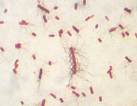
Proteus is a genus of Gram-negative Proteobacteria. Proteus bacilli are widely distributed in nature as saprophytes, being found in decomposing animal matter, sewage, manure soil, and human and animal feces. They are opportunistic pathogens, commonly responsible for urinary and septic infections, often nosocomial.
Common Species are as follows:-
P. hauseri
P. mirabilis
P. myxofaciens
P. penneri
P. vulgaris

Providencia is a Gram negative, motile bacterium of the family Enterobacteriaceae. Some strains (P. stuartii, for example) are opportunistic pathogens in humans and can cause urinary tract infections, particularly in patients with long-term indwelling urinary catheters or extensive severe burns. Other strains (for example P. burhodogranariea and P. sneebia) are found in the haemolymph of Drosophila melanogaster fruit flies.
Common Species are as follows:-
P. stuartii
P. sneebia
P. rettgeri
P. rustigianii
P. heimbachae
P. burhodogranariea
P. alcalifaciens


Pseudomonas is a genus of Gram-negative, aerobic gamma proteobacteria, belonging to the family Pseudomonadaceae containing 191 validly described species. The members of the genus demonstrate a great deal of metabolic diversity, and consequently are able to colonize a wide range of niches. Their ease of culture in vitro and availability of an increasing number of Pseudomonas strain genome sequences has made the genus an excellent focus for scientific research; the best studied species include P. aeruginosa in its role as an opportunistic human pathogen, the plant pathogen P. syringae, the soil bacterium P. putida, and the plant growth-promoting P. fluorescens.
Common Species are as follows:-
P. aeruginosa group
P. aeruginosa
P. alcaligenes
P. anguilliseptica
P. argentinensis
P. borbori
P. citronellolis
P. flavescens
P. mendocina
P. nitroreducens
P. oleovorans
P. pseudoalcaligenes
P. resinovorans
P. straminea
P. chlororaphis group
P. agarici
P. asplenii
P. aurantiaca
P. aureofaciens
P. chlororaphis
P. corrugata
P. fragi
P. lundensis
P. taetrolens
P. fluorescens group
P. antarctica
P. azotoformans
'P. blatchfordae'
P. brassicacearum
P. brenneri
P. cedrina
P. corrugata
P. fluorescens
P. gessardii
P. libanensis
P. mandelii
P. marginalis
P. mediterranea
P. meridiana
P. migulae
P. mucidolens
P. orientalis
P. panacis
P. protegens
P. proteolytica
P. rhodesiae
P. synxantha
P. thivervalensis
P. tolaasii
P. veronii
P. pertucinogena group
P. denitrificans
P. pertucinogena
P. putida group
P. cremoricolorata
P. entomophila
P. fulva
P. monteilii
P. mosselii
P. oryzihabitans
P. parafulva
P. plecoglossicida
P. putida
P. stutzeri group
P. balearica
P. luteola
P. stutzeri
P. syringae group
P. amygdali
P. avellanae
P. caricapapayae
P. cichorii
P. coronafaciens
P. ficuserectae
'P. helianthi'
P. meliae
P. savastanoi
P. syringae
'P. tomato'
P. viridiflava
incertae sedis
P. abietaniphila
P. acidophila
P. agarici
P. alcaliphila
P. alkanolytica
P. amyloderamosa
P. asplenii
P. azotifigens
P. cannabina
P. coenobios
P. congelans
P. costantinii
P. cruciviae
P. delhiensis
P. excibis
P. extremorientalis
P. frederiksbergensis
P. fuscovaginae
P. gelidicola
P. grimontii
P. indica
P. jessenii
P. jinjuensis
P. kilonensis
P. knackmussii
P. koreensis
P. lini
P. lutea
P. moraviensis
P. otitidis
P. pachastrellae
P. palleroniana
P. papaveris
P. peli
P. perolens
P. poae
P. pohangensis
P. protegens
P. psychrophila
P. psychrotolerans
P. rathonis
P. reptilivora
P. resiniphila
P. rhizosphaerae
P. rubescens
P. salomonii
P. segitis
P. septica
P. simiae
P. suis
P. thermotolerans
P. toyotomiensis
P. tremae
P. trivialis
P. turbinellae
P. tuticorinensis
P. umsongensis
P. vancouverensis
P. vranovensis
P. xanthomarina
The bacteria is used as biocontrol agents
Since the mid-1980s, certain members of the Pseudomonas genus have been applied to cereal seeds or applied directly to soils as a way of preventing the growth or establishment of crop pathogens. This practice is generically referred to as biocontrol. The biocontrol properties of
P. fluorescens and P. protegens strains (CHA0 or Pf-5 for example) are currently best-understood, although it is not clear exactly how the plant growth-promoting properties of
P. fluorescens are achieved. Theories include: the bacteria might induce systemic resistance in the host plant, so it can better resist attack by a true pathogen; the bacteria might outcompete other (pathogenic) soil microbes, e.g. by siderophores giving a competitive advantage at scavenging for iron; the bacteria might produce compounds antagonistic to other soil microbes, such as phenazine-type antibiotics or hydrogen cyanide. Experimental evidence supports all of these theories.
Use as bioremediation agents
Some members of the genus are able to metabolise chemical pollutants in the environment, and as a result, can be used for bioremediation. Notable species demonstrated as suitable for use as bioremediation agents include:
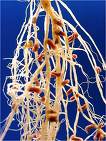
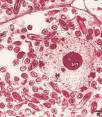
Rhizobium is a genus of Gram-negative soil bacteria that fix nitrogen. Rhizobium forms an endosymbiotic nitrogen fixing association with roots of legumes and Parasponia.The bacteria colonize plant cells within root nodules; here the bacteria convert atmospheric nitrogen to ammonia and then provide organic nitrogenous compounds such as glutamine or ureides to the plant. The plant provides the bacteria with organic compounds made by photosynthesis.
Common Species are as follows:-
R. aggregatum
R. alamii
R. alkalisoli
R. alvei
R. azibense
R. borbori
R. calliandrae
R. cauense
R. cellulosilyticum
R. daejeonense
R. endolithicum
R. endophyticum
R. giardinii Amarger
R. g. sv. giardinii
R. g. sv. phaseoli
R. grahamii López-López
R. hainanense Chen
R. halophytocola Bibi
R. halotolerans
R. helanshanense
R. herbae
R. huautlense
R. indigoferae
R. jaguaris
R. kunmingense
R. laguerreae Saïdi
R. larrymoorei
R. leguminosarum
R. l. sv. trifolii
R. l. sv. viciae
R. lemnae
R. leucaenae
R. loessense
R. lupini Eckhardt
R. lusitanum Valverde
"Candidatus Rhizobium massiliae"
R. mayense
R. mesoamericanum
R. mesosinicum
R. miluonense
R. mongolense
R. multihospitium
R. naphthalenivorans
R. nepotum
R. oryzae
R. pakistanensis
R. paknamense
R. paranaense
R. petrolearium
R. phaseoli
R. phenanthrenilyticum
R. pisi
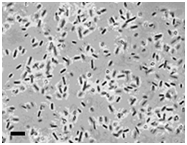
R.aestuarii
R.azotoformans
R. blasticus corrig.
R. capsulatus
R.johrii
R.maris
R.megalophilus
R.ovatus
R. sphaeroides
R.veldkampii
R. vinaykumarii
Production of Biohdrogen by dark fermentative from
Renewable Sources

Rhodococcus is a genus of aerobic, nonsporulating, nonmotile Gram-positive bacteria closely related to Mycobacterium and Corynebacterium.While a few species are pathogenic, most are benign, and have been found to thrive in a broad range of environments, including soil, water, and eukaryotic cells. Fully sequenced in October 2006, the genome is known to be 9.7 megabasepairs long and 67% G/C.
Common Species are as follows:-
Rhodococcus aurantiacus
Rhodococcus baikonurensis
Rhodococcus boritolerans
Rhodococcus equi
Rhodococcus coprophilus
Rhodococcus corynebacterioides
Rhodococcus erythropolis
Rhodococcus fascians
Rhodococcus globerulus
Rhodococcus gordoniae
Rhodococcus jostii
Rhodococcus koreensis
Rhodococcus kroppenstedtii
Rhodococcus maanshanensis
Rhodococcus marinonascens
Rhodococcus opacus
Rhodococcus percolatus
Rhodococcus phenolicus
Rhodococcus polyvorum
Rhodococcus pyridinivorans
Rhodococcus rhodochrous
Rhodococcus rhodnii
Rhodococcus ruber
Rhodococcus jostii RHA1
Rhodococcus triatomae
Rhodococcus tukisamuensis
Rhodococcus
Rhodococcus yunnanensis
Rhodococcus zopfii
The bacteria is used in Strains of Rhodococcus are important owing to their ability to catabolize a wide range of compounds and produce bioactive steroids, acrylamide, and acrylic acid, and their involvement in fossil fuel biodesulfurization.

Saccharothrix An endophytic actinomycete strain
Common Species are as follows:-
Saccharothrix aerocolonigenes
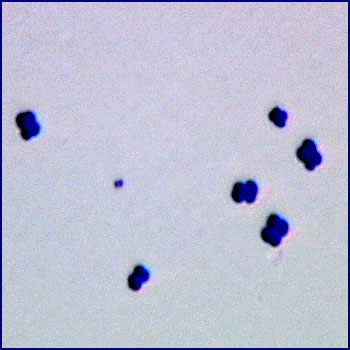
Sarcina is a genus of Gram-positive cocci bacteria in the family Clostridiaceae. A synthesizer of microbial cellulose, they have a cuboidal cell arrangement. Various members of the genus are human flora and may be found in the skin and large intestine.
The genus's type species is Sarcina ventriculi, a variety found on the surface of cereal seeds, in soil, mud, and in the stomachs of humans, rabbits, and guinea pigs.
Common Species are as follows:-
Sarcina ventriculi


Serratia is a genus of Gram-negative, facultatively anaerobic, rod-shaped bacteria of the Enterobacteriaceae family. The most common species in the genus, S. marcescens, is normally the only pathogen and usually causes nosocomial infections. However, rare strains of S. plymuthica, S. liquefaciens, S. rubidaea, and S. odoriferae have caused diseases through infection. Members of this genus produce characteristic red pigment, prodigiosin, and can be distinguished from other members of the family Enterobacteriaceae by their unique production of three enzymes: DNase, lipase, and gelatinase.
Common Species are as follows:-
S. entomophila
S. ficaria
S. fonticola
S. grimesii
S. liquefaciens
S. marcescens
S. odorifera
S. plymuthica
S. proteamaculans
S. quinivorans
S. rubidaea
S. symbiotica
Serratia marcescens was once thought to be a nonpathogenic bacterium. Because of the red pigment it produces, it was widely used to trace bacterial transmission and to study settling and drifting of bacteria in air currents. In 1950, the US Navy conducted a secret experiment called "Operation Seaspray" to study wind currents that might carry biological weapons. They filled balloons with S. marcescens and burst them over San Francisco. Shortly thereafter, doctors in the area noted a drastic increase in pneumonia and urinary tract infections.
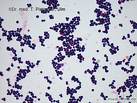

Staphylococcus is a genus of Gram-positive bacteria. Under the microscope, they appear round (cocci), and form in grape-like clusters.
The Staphylococcus genus includes at least 40 species. Of these, nine have two subspecies and one has three subspecies. Most are harmless and reside normally on the skin and mucous membranes of humans and other organisms. Found worldwide, they are a small component of soil microbial flora.
Common Species are as follows:-
S. arlettae
S. agnetis
S. aureus
S. auricularis
S. capitis
S. caprae
S. carnosus
S. caseolyticus
S. chromogenes
S. cohnii
S. condimenti
S. delphini
S. devriesei
S. epidermidis
S. equorum
S. felis
S. fleurettii
S. gallinarum
S. haemolyticus
S. hominis
S. hyicus
S. intermedius
S. kloosii
S. leei
S. lentus
S. lugdunensis
S. lutrae
S. massiliensis
S. microti
S. muscae
S. nepalensis
S. pasteuri
S. pettenkoferi
S. piscifermentans
S. pseudintermedius
S. pseudolugdunensis
S. pulvereri
S. rostri
S. saccharolyticus
S. saprophyticus
S. schleiferi
S. sciuri
S. simiae
S. simulans
S. stepanovicii
S. succinus
S. vitulinus
S. warneri
S. xylosus
The bacteria is used in Coagulase production
One of the most important phenotypical features used in the classification of staphylococci is their ability to produce coagulase, an enzyme that causes blood clot formation.
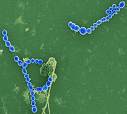

Streptococcus is a genus of coccus (spherical) Gram-positive bacteria belonging to the phylum Firmicutes and the Lactobacillales (lactic acid bacteria) order. Cellular division occurs along a single axis in these bacteria, and thus they grow in chains or pairs, hence the name—from Greek στρεπτός streptos, meaning easily bent or twisted, like a chain (twisted chain).
Common Species are as follows:-
Streptococcus agalactiae
Streptococcus anginosus
Streptococcus bovis
Streptococcus canis
Streptococcus constellatus
Streptococcus dysgalactiae
Streptococcus equinus
Streptococcus iniae
Streptococcus intermedius
Streptococcus milleri
Streptococcus mitis
Streptococcus mutans
Streptococcus oralis
Streptococcus parasanguinis
Streptococcus peroris
Streptococcus pneumoniae
Streptococcus pseudopneumoniae
Streptococcus pyogenes
Streptococcus ratti
Streptococcus salivarius
Streptococcus tigurinus
Streptococcus thermophilus
Streptococcus sanguinis
Streptococcus sobrinus
Streptococcus suis
Streptococcus uberis
Streptococcus vestibularis
Streptococcus viridans
Streptococcus zooepidemicus
The bacteria is used in the viridans streptococci are a large group of commensal bacteria, that are either α-hemolytic, producing a green coloration on blood agar plates (hence the name "viridans", from Latin vĭrĭdis, green), or nonhemolytic. They possess no Lancefield antigens.


Streptomyces is the largest genus of Actinobacteria and the type genus of the family Streptomycetaceae. Over 500 species of Streptomyces bacteria have been described. As with the other Actinobacteria, streptomycetes are Gram-positive, and have genomes with high GC content.Found predominantly in soil and decaying vegetation, most streptomycetes produce spores, and are noted for their distinct "earthy" odor that results from production of a volatile metabolite, geosmin.
Common Species are as follows:-
S. scabiei
S. acidiscabies
S. europaeiscabiei
S. luridiscabiei
S. niveiscabiei
S. puniciscabiei
S. reticuliscabiei
S. stelliscabiei
S. turgidiscabies
S. ipomoeae
Streptomyces is the largest antibiotic-producing genus, producing antibacterial, antifungal, and antiparasitic drugs, and also a wide range of other bioactive compounds, such as immuno suppressants. Almost all of the bioactive compounds produced by Streptomyces are initiated during the time coinciding with the aerial hyphal formation from the substrate mycelium.
Streptomycetes produce numerous antifungal compounds of medicinal importance, including nystatin (from S. noursei), amphotericin B (from S. nodosus), and natamycin (from S. natalensis).


Streptosporangium roseum is an aerobic Gram-positive bacterium isolated from vegetable.
Common Species are as follows:-
Streptosporangium violaceochramogenes
Streptosporangium album
The bacteria is used in production of antibiotic XK-49-1-B-2
Production of Sporoviridin like antibiotic
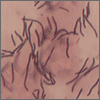
Three new antibiotics, neoantimycin, neaureothin and ochramycin have been isolated from Streptoverticillium orinoci.
Common Species are as follows:-
Streptoverticillium cinnamoneum
Streptoverticillium olivoverticillatum
S. abikoense
S. albireticuli
S. alboverticillatum
S. album
S. ardum
S. aureoversile
S. baldaccii
S. biverticillatum
S. blastmyceticum
S. cinnamoneum
S. distallicum
S. ehimense
S. eurocidicum
S. fervens
S. flavopersicum
S. griseocarneum
S. griseoverticillatum
S. hachijoense
S. hiroshimense
S. kashmirense
S. kentuckense
S. kishiwadense
S. ladakanum
S. lavenduligriseum
S. lilacinum
S. luteoverticillatum
S. mashuense
S. mobaraense
S. morookaense
S. netropsis
S. olivomycini
S. olivoreticuli
S. olivoverticillatum
S. orinoci
S. parvisporogenes
S. rectiverticillatum
S. roseoverticillatum
S. salmonis
S. sapporonense
S. septatum
S. syringium
S. thioluteum
S. verticillium
The bacteria is used in production of Leucomycin, Magnamycin, Niddamycin
Production of trichomycin

Sulfolobus is a genus of microorganism in the family Sulfolobaceae. It belongs to the archaea domain.Sulfolobus species grow in volcanic springs with optimal growth occurring at pH 2-3 and temperatures of 75-80 °C, making them acidophiles and thermophiles respectively. Sulfolobus cells are irregularly shaped and flagellar.
Common Species are as follows:-
S. acidocaldarius
S. islandicus
S. metallicus
S. neozealandicus
S. shibatae
S. solfataricus
S. sp. AMP12/99
S. sp. CH7/99
S. sp. FF5/00
S. sp. G81
S. sp. H
S. sp. JP2
S. sp. JP3
S. sp. K00 8-41
S. sp. L00 11
S. sp. L00 24
S. sp. M02
S. sp. MV2/99
S. sp. MVSoil3/SC2
S. sp. MVSoil6/SC1
S. sp. NGB23/00
S. sp. NGB6/00
S. sp. NL8/00
S. sp. NO82
S. sp. NOB8H2
S. sp. RC3
S. sp. RC6/00
S. sp. RCSC1/01
S. sp. Sko-3
S. sp.
S. sp. Ta
S. sp. Tu A
S. sp. Tu B-1
S. sp. Y00 58-82
S. sp. Y01 90#-18
S. sp. Y99 9-16
S. sp. Y99 9-23
S. tengchongensis
S. thuringiensis
S. tokodaii
S. yangmingensis
uncultured Sulfolobus sp.
The bacteria is used in production of citrate synthase, restriction endonuclease
This is the first time that more than a single origin of DNA replication has been shown to be used in a prokaryotic cell. The mechanism of DNA replication in archaea is evolutionary conserved, and similar to that of eukaryotes. Sulfolobus is now used as a model to study the molecular mechanisms of DNA replication in Archaea. And because the system of DNA replication in Archaea is much simpler than that in Eukaryota, it was suggested that Archaea could be used as model to study the much more complexed DNA replication in Eukaryota.
Role in biotechnology
Sulfolobus proteins are of interest for biotechnology and industrial use due to their thermostable nature. One application is the creation of artificial derivatives from S. acidocaldarius proteins, named affitins. Intracellular proteins are not necessarily stable at low pH however, as Sulfolobus species maintain a significant pH gradient across the outer membrane. Sulfolobales are metabolically dependent on sulfur: heterotrophic or autotrophic, their energy comes from the oxidation of sulfur and/or cellular respiration in which sulfur acts as the final electron acceptor. For example, S. tokodaii is known to oxidize hydrogen sulfide to sulfate intracellularly.


Thermoactinomyces is a genus of gram-positive endospore-forming bacteria. Members of the genus are present in most soil samples and are commonly found in natural high-temperature habitats such as leaf and compost heaps and overheated stores of hay, grain, and other plant materials.

It is an thermo tolerant actinomycetes.


Thermobifida fusca, formerly known as Thermomonaspora fusca, is a rod shaped, thermophilic organism found in decaying organic matter and is a major degrader of plant cell wall. Its preferred habitat are compost heaps, rotting hay, manure piles, or mushroom growth medium because these are self-heated organic materials that can reach Thermobifida fusca’s growth temperature of 55ºC . The genus Thermobifida is comprised of 2 members, the other being Thermobifida alba. Both members of the genus are acid fast, Gram-positive aerobic organisms. It is important to map out the entire genome of this organism because of its biotechnological uses. The organism produces multiple extracellular enzymes including cellulases that are responsible for the decomposition of cellulose and lignocellulose residues, which are important for the breakdown of agricultural and urban wastes .
Common Species are as follows:-
Thermobifida fusca strain YX
Thermobifida fusca produces multiple extracellular enzymes including cellulases that are responsible for the decomposition of cellulose and lignocellulose residues, which make up the bulk of agricultural and urban wastes. T. fusca is important for waste remediation because they can degrade all major plant cell wall polymers except lignin and pectin. The cellulose-decomposing capabilities of this organism are of importance in establishing safe biotechnological processes. There is also good potential for use in the wood and paper industry. Cellulases are being studied for their “thermostability, broad pH range (4-10), and high activity.

Thermus is a genus of thermophilic bacteria. It is one of several bacteria belonging to the Deinococcus-Thermus group.
These bacteria have thick cell walls that give them gram-positive stains, but they include a second membrane and so are closer in structure to those of gram-negative bacteria.
Common Species are as follows:-
Thermus aquaticus
Thermus antranikianii
Thermus igniterrae
Thermus tengchongensis
T. aquaticus,
T. brockianus,
T. caldophilus,
T. filiformis,
T. kawarayuensis,
T. nonproteolyticus,
T. oshimai,
T. rehai,
T. scotoductus,
T. thermophilus,
T. thermophilus HB27,
T. yunnanensi
T. sp.,
T. sp. manikaranii ,
T. spp.


The genus Thiobacillus is also known under the name of Acidithiobacillus. Thiobacillus ferrooxidans are airborne bacteria. This genus is thermophilic, preferring temperatures of 45-50 degrees Celsius. In addition, this is an acidophilic genus, preferring a pH of 1.5 to 2.5. A few species, however, only grow in a neutral pH.
The genus Thiobacillus, also known as Acidithiobacillus
Common Species are as follows:-
Thiobacillus aquaesulis,
T. ferrooxidans,
T. denitrificans
Acidithiobacillus albertensis
Acidithiobacillus caldus
Acidithiobacillus cuprithermicus
Acidithiobacillus ferridurans
Acidithiobacillus ferrivorans
Acidithiobacillus ferrooxidans
It can also be beneficial in recovering materials such as copper and uranium. It has been suggested that T. ferrooxidans forms a symbiotic relationship with members of the genus Acidiphilium, a bacterial capable of iron reduction. Other species of Thiobacillus grow in water and sediment; there are both freshwater and marine strains.

Anomia trigonopsis, also known as the New Zealand jingle, is a species of marine bivalve mollusc in the family Anomiidae, the anomiids.
Common Species are as follows:-
Trignopsis variabilis
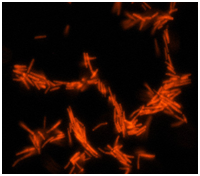
Virgibacillus is a genus of Gram-positive, rod-shaped (bacillus), bacteria and a member of the phylum Firmicutes. Virgibacillus species can be obligate aerobes (oxygen reliant), or facultative anaerobes and catalase enzyme positive. Under stressful environmental conditions, the bacteria can produce oval or ellipsoidal endospores in terminal, or sometimes subterminal, swollen sporangia. The genus was recently reclassified from the genus Bacillus in 1998. Subsequently, a number of new species have been discovered or reclassified as Virgibacillus
V. alimentarius
V. campisalis
V. carmonensis
V. dokdonensis
V. halodenitrificans
V. marismortui
V. necropolis
V. picturae
V. proomii
V. salexigens

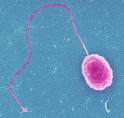
Vibrio is a genus of Gram-negative bacteria possessing a curved-rod shape (comma shape), several species of which can cause foodborne infection, usually associated with eating undercooked seafood. Typically found in saltwater, Vibrio species are facultative anaerobes that test positive for oxidase and do not form spores.All members of the genus are motile and have polar flagella with sheaths. Recent phylogenies have been constructed based on a suite of genes (multilocus sequence analysis).
Common Species are as follows:-
V. adaptatus
V. aerogenes
V. aestivus
V. aestuarianus
V. agarivorans
V. albensis
V. alfacsensis
V. alginolyticus
V. anguillarum
V. areninigrae
V. artabrorum
V. atlanticus
V. atypicus
V. azureus
V. brasiliensis
V. bubulus
V. calviensis
V. campbellii
V. casei
V. chagasii
V. cholerae
V. cincinnatiensis
V. coralliilyticus
V. crassostreae
V. cyclitrophicus
V. diabolicus
V. diazotrophicus
V. ezurae
V. fluvialis
V. fortis
V. furnissii
V. gallicus
V. gazogenes
V. gigantis
V. halioticoli
V. harveyi
V. hepatarius
V. hippocampi
V. hispanicus
V. ichthyoenteri
V. indicus
V. kanaloae
V. lentus
V. litoralis
V. logei
V. mediterranei
V. metschnikovii
V. mimicus
V. mytili
V. natriegens
V. navarrensis
V. neonatus
V. neptunius
V. nereis
V. nigripulchritudo
V. ordalii
V. orientalis
V. pacinii
V. parahaemolyticus
V. pectenicida
V. penaeicida
V. pomeroyi
V. ponticus
V. proteolyticus
V. rotiferianus
V. ruber
V. rumoiensis
V. salmonicida
V. scophthalmi
V. splendidus
V. superstes
V. tapetis
V. tasmaniensis
V. tubiashii
V. vulnificus
V. wodanis
V. xuii
Early debridement of the infected wound has an important role in successful therapy and is especially indicated to avoid amputation of fingers, toes, or limbs.
Expeditious and serial surgical evaluation and intervention are required because patients may deteriorate rapidly, especially those with necrotizing fasciitis or compartment syndrome.
Reconstructive surgery, such as skin graft, is indicated in the recovery phase.


Xanthomonas is a genus of Proteobacteria, many of which cause plant diseases.
Common Species are as follows:-
X. albilineans
X. alfalfae
X. ampelina
X. arboricola
X. axonopodis
X. boreopolis
X. badrii
X. bromi
X. campestris
X. cassavae
X. citri
X. codiaei
X. cucurbitae
X. cyanopsidis
X. cynarae
X. euvesicatoria
X. frageriae
X. gardneri
X. holcicola
X. hortorum
X. hyacinthi
X. malvacearum
X. maltophila
X. manihotis
X. melonis
X. oryzae
X. papavericola
X. perforans
X. phaseoli
X. pisi
X. populi
X. sacchari
X. theicola
X. translucens
X. vasicola
Industrial use
Xanthomonas species produce an extrapolysaccharide called xanthan gum that has a wide range of industrial uses, including foods, petroleum products, and cosmetics.


Zymomonas is a genus of bacteria. Members of this genus are gram negative, facultative anaerobic, non-sporulating, polarly-flagellated, rod-shaped bacteria.
Common Species are as follows:-
Zymomonas mobilis
Application to Biotechnology
Z. mobilis’ ability to efficiently produce ethanol is of particular interest. This is particularly true due to the growing need for renewable energy sources and bioethanol ranks among the top choices at this time. Researchers are working on strains that are capable of fermenting more complex carbohydrates that are widely available such as cellulose and molasses. And in terms of organisms being studied for ethanol production Z. mobilis is a leading candidate because of its high level of efficiency, high level of ethanol tolerance and its ability to be genetically altered.
Also, the byproduct of sucrose fermentation levan can be a useful product. Levan is used in food and pharmaceuticals as a thickening, gelling and suspending agent.